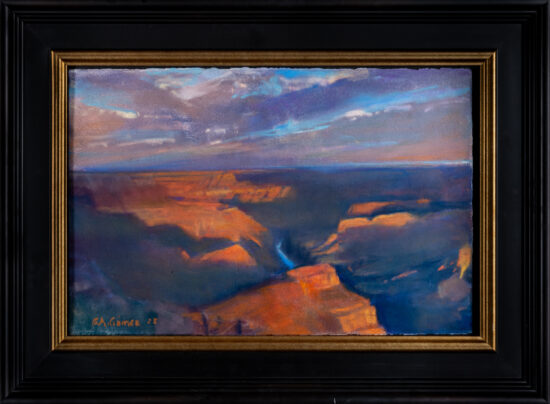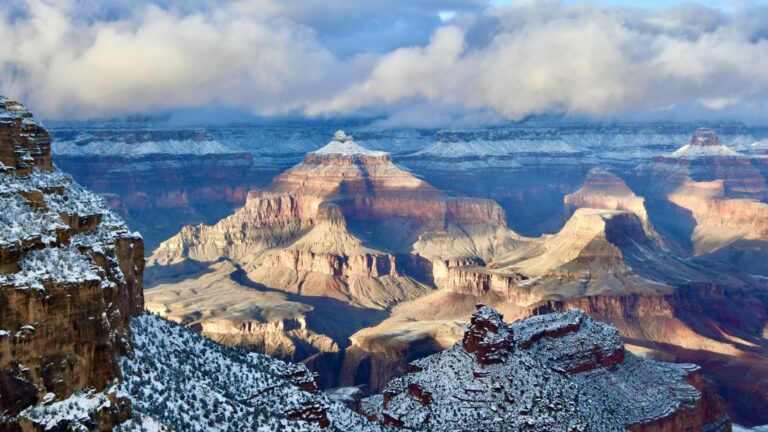Groundbreaking Visitor Survey Sheds Light on Key Challenges
As one of America’s premier national parks, a UNESCO World Heritage Site, and one of the seven natural wonders of the world, Grand Canyon is a popular destination whose spectacular scenery, geologic marvels, diverse ecosystems, iconic wildlife, and extensive Indigenous history draw visitors from around the globe. Since Grand Canyon National Park was created in 1919, visitation has steadily increased –– raising concerns that this special place is at risk of being loved to death.

As one of America’s premier national parks, a UNESCO World Heritage Site, and one of the seven natural wonders of the world, Grand Canyon is a popular destination whose spectacular scenery, geologic marvels, diverse ecosystems, iconic wildlife, and extensive Indigenous history draw visitors from around the globe. Since Grand Canyon National Park was created in 1919, visitation has steadily increased—raising concerns that this special place is at risk of being loved to death.
Between 2010 and 2019, the number of people visiting Grand Canyon National Park rose by 36 percent to more than 6 million annually, with 90 percent of visitors choosing to recreate in the popular South Rim area that features historic hotels, two campgrounds, five trails leading to the Colorado River, dozens of backcountry campsites, four visitor centers, two scenic drives, and other recreational amenities. This growing visitation has intensified a number of park management challenges, including crowding, user conflicts, degraded infrastructure, natural and cultural resource damage, and safety concerns, including increases in search-and-rescue responses. With all these issues impacting the park’s ability to ensure safe, satisfying visitor experiences while preserving its natural and historical treasures—and park budgets remaining volatile—it is essential for park managers to wisely prioritize the allocation of resources for visitor services, ecosystem and cultural resources protection, and infrastructure maintenance and improvement.
Helping Grand Canyon National Park managers make informed decisions on these important issues was the impetus behind an ambitious 2022 visitation survey project funded by Grand Canyon Conservancy. Led by Dr. Will Rice, Assistant Professor of Outdoor Recreation and Wildland Management at the University of Montana, and Dr. Derrick Taff, Professor in Charge of Graduate Studies Recreation, Park, and Tourism Management at Penn State University, the project’s goal was to gather data from park visitors on their motivations, their experiences, and their perceptions of resource degradation, to develop effective methods for prioritizing future research and management interventions in at-risk areas. “Grand Canyon is a key pillar of our system of national parks, and our larger system of World Heritage Sites,” notes Dr. Rice, “and therefore it is somewhat surprising how little research has been previously conducted to inform visitor use management in popular day-use locations.”
The research project reflects the deep personal connection that Drs. Rice and Taff have with Grand Canyon National Park. “I was a seasonal ranger in the park in the summer of 2015,” Dr. Rice recalls. “Later, I returned as a Ph.D. student to conduct some of my dissertation work in the park, studying key stakeholders’ perceptions of visitor use management. And returning this past summer, as a professor with students of my own—staying in the same cabin I lived in during my time as a seasonal ranger—I was able to help carry out the very study Derrick and I proposed through my dissertation work.”
That earlier project, which was conducted in 2019, involved interviews with park managers, commercial tourism operators, local leaders, community service organizations, and others familiar with the park’s resources and management. It helped to identify which sites in the park’s South Rim area should be of most concern for future visitor use management and monitoring, including the areas that were the focus of the visitor survey project.
During the summer of 2022, teams from Penn State and the University of Montana surveyed visitors who drove into the park through the South Entrance, as well as pedestrian visitors at the Bright Angel Trailhead, the Village bus transfer, Grand Canyon Visitors Center Orange Route bus transfer, and the path leading to Mather Point. They collected data on visitor demographics and activities, their transportation choices, what they felt they gained from visiting the park, and how crowding and safety concerns impacted their plans and experiences. The study also included a participatory GPS mapping component, giving visitors the opportunity to map sites where they accessed park services, as well as areas they felt were damaged by overuse or were at risk of future degradation.
The combination of GPS data and survey results was designed to help park managers better understand how visitor motivations relate to actual behavior during their visits. “Combining spatial data from GPS units given out to visitors moving around the park with survey data will give us a really comprehensive picture of who is visiting the most accessible areas of the park, how often they spend there, and how they are distributing through the area,” observed Elena Thomas, a University of Montana master’s student who served on a survey team. “Given that most visitors never leave the South Rim of the canyon, this data is essential to park management to provide visitors with the best possible experience.”
To help determine visitors’ motivations for recreating in Grand Canyon National Park, survey participants were asked about the perceived benefits of their visits in several key areas:
- Connection with nature—including whether their activities at the park deepened their connection with nature and their appreciation of natural beauty.
- Physical and mental well-being—including whether their visit reduced mental and physical stress, increased their self-acceptance and self-esteem, and boosted their confidence in their abilities and their sense of independence.
- Family cohesiveness—including whether their park experience strengthened family bonds, kept any children in their group engaged in the outdoors, and bolstered their socialization and social identity.
- Appreciation of Grand Canyon—including whether their outing enhanced their knowledge of Grand Canyon’s cultural heritage, their understanding of historical sites, and their knowledge of the canyon’s geologic history.
To determine the impact of crowding on visitor experiences, survey participants were also asked whether they planned or altered their itinerary to avoid crowds—including decisions to visit the park earlier or later than they would have liked—as well as how crowded they felt during their visit. In addition, the survey solicited visitor feelings regarding their own physical safety in the park, including the perceived risk from vehicles, crowds, dangerous behavior by other visitors, wildlife, the proximity of trails to the edge of the canyon, and heat and other weather conditions. They were also asked whether they had decided not to travel to certain areas of the park due a fear of injury, and whether their perception of safety at the park would influence future trip planning.
In total, the teams collected 599 surveys and GPS tracks at the study’s four pedestrian survey locations, with another 354 surveys and GPS tracks collected from vehicles entering the park through the South Entrance. Most survey respondents indicated that their primary activity during their visit was hiking, followed by photography and scenic driving, and many said that their main motivation for engaging in those activities was to be close to nature, view wildlife, and have fun with family. After their visit, participants were asked what level of success they had in accomplishing their desired outcomes, with the most common results including improving their mood and stimulating their senses through experiencing nature. Visitors were also asked about their overall affinity for Grand Canyon, with most agreeing “that no other place could compare to the experience they have at this place.”
The survey data will help to provide park managers with the information they need to make service and resource allocation decisions to enhance visitor experiences while protecting Grand Canyon National Park’s natural and cultural resources. “I got to help answer questions park managers had about their visitors who were coming to enjoy the canyon, what their motivations for visiting were, where they traveled during their time in the park, and if they attained positive outcomes from their trip,” says Sophie Morris, a University of Montana master’s student who was part of a survey team. “While it was not on many visitors’ trip itineraries to be asked about taking a GPS unit along with them or completing a survey, we had a lot of positive responses and interest in what we were doing and why.”
While the researchers are still analyzing the data collected this past summer, they are confident that their work will help Grand Canyon National Park manage its natural resources, essential infrastructure, and cultural and historical sites to keep the park healthy and vibrant for generations to come. “It is heartening as a researcher to be able to work with staff at the park who are so dedicated to science-based decision-making and management,” declares Dr. Rice. “The greatest feeling as a researcher is knowing that the science you are conducting is going to be applied to inform and improve management. At Grand Canyon, that is without question. Derrick and I look forward to continued collaboration with the park.”
This groundbreaking visitation survey project is set to continue in 2023, with the researchers shifting their focus to six other areas of concern in the park. “We’re hoping to be back in the park conducting research this coming summer, focusing on Mather Campground and the overlooks along Desert View Drive,” says Dr. Rice. “The entirety of South Rim is just too big to cover in one year.”
Author: John Bates



